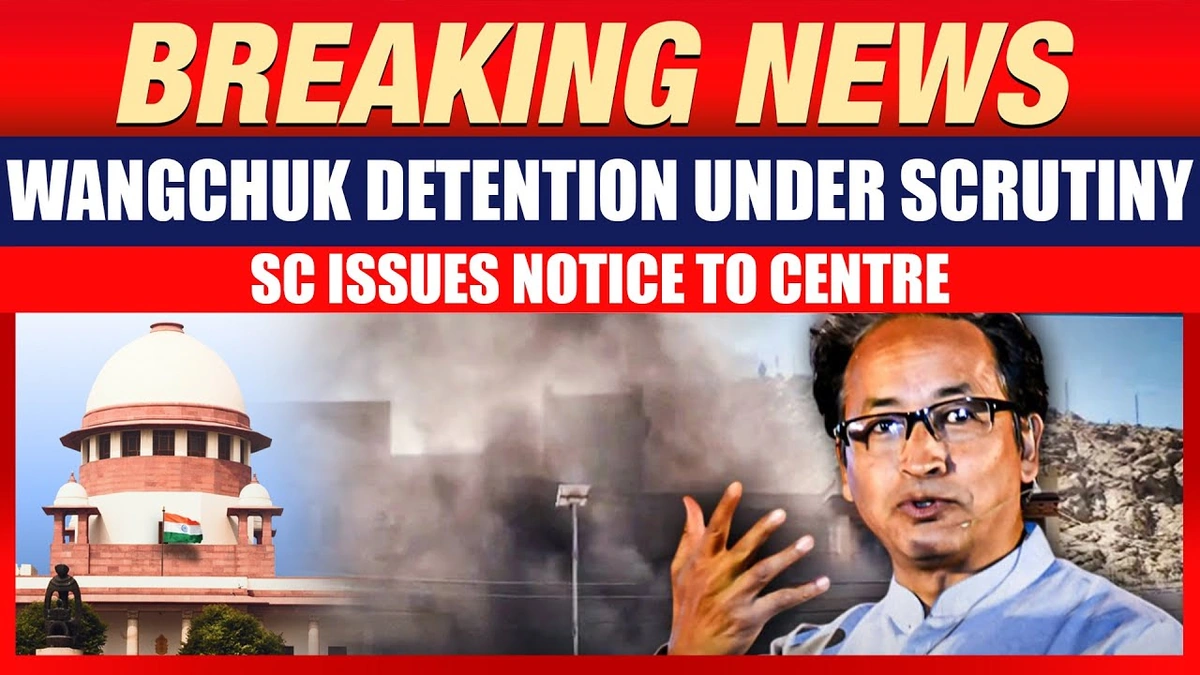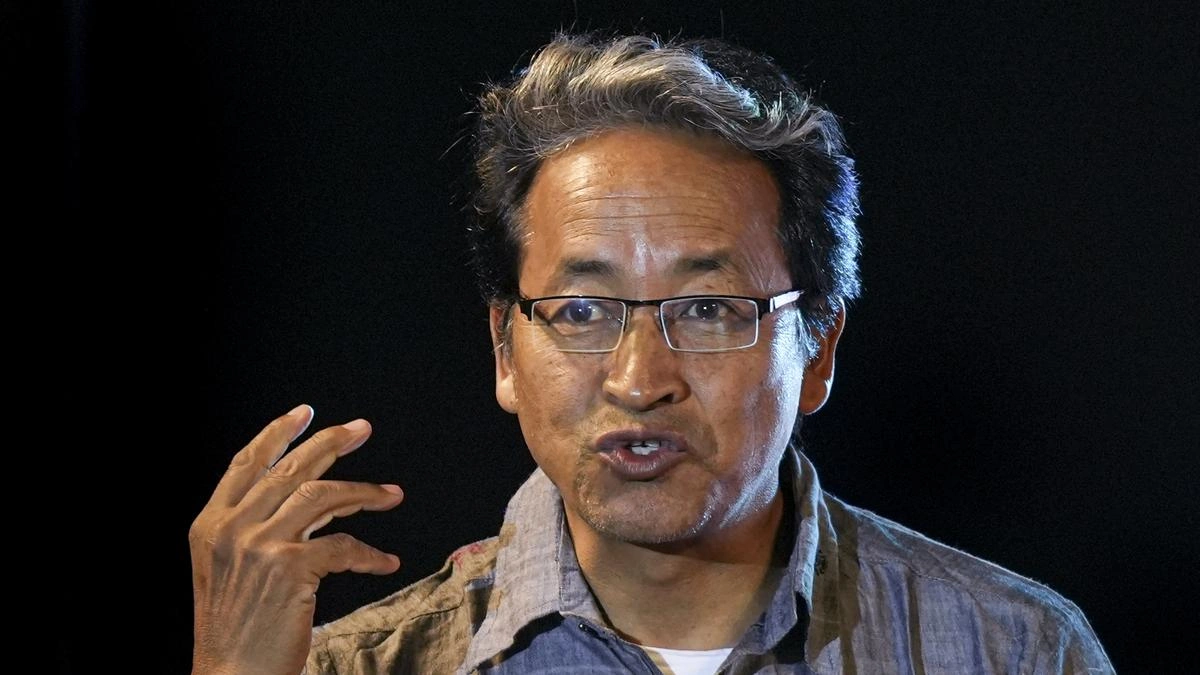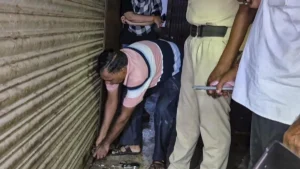Supreme Court Addresses Centre and Ladakh Admin Regarding Wangchuk Detention; No Immediate Relief
The courtroom drama, the weighty pronouncements, the palpable tension – all of it swirling around a single name: Sonam Wangchuk . But let’s be honest, the headlines only tell a fraction of the story. The Supreme Court’s recent involvement in the Wangchuk detention case isn’t just another legal proceeding; it’s a crucial moment that speaks volumes about environmental activism, regional politics, and the delicate balance between dissent and national security. So, let’s dive deeper, shall we?
Why Wangchuk’s Detention Matters | Beyond the Headlines

Here’s the thing: Wangchuk isn’t just some random guy. He’s an innovator, an educator, and a passionate advocate for the fragile ecosystem of Ladakh. His “ice stupas” are globally recognized, ingenious solutions to water scarcity in the high-altitude desert. And his activism? It’s deeply rooted in the concerns of the local communities about the impact of rapid development on their land and way of life. That’s why his detention sparked such outrage and led to the Supreme Court intervention . According to reports, the apex court is seeking answers from both the central government and the Ladakh administration regarding the circumstances surrounding his detention and the restrictions placed on his movement. What fascinates me is the potential precedent this sets – how does the state balance environmental concerns with developmental imperatives?
But, why should you care, especially if you’re sitting miles away in, say, Mumbai or Chennai? Because this case touches upon fundamental rights enshrined in the Indian Constitution: the right to free speech, the right to assembly, and the right to dissent. And the way these rights are interpreted and applied in a region as sensitive as Ladakh has far-reaching implications for the entire country. This situation is not just about Ladakh; it reflects broader questions about the space for dissent and environmental advocacy in India.
Understanding the Legal Nuances | No Immediate Relief, But Hope Remains
The phrase “no immediate relief” can be disheartening, I know. It suggests a setback, a delay in justice. But in the legal world, things are rarely black and white. The Supreme Court’s decision not to grant immediate relief doesn’t necessarily mean the case is closed. It simply indicates that the court needs more information, more clarity, before arriving at a final judgment. The court is essentially buying time to scrutinize the details. This is where the central government and the Ladakh administration come in. They are now obligated to provide a comprehensive explanation of their actions – the legal basis for Wangchuk’s detention, the specific charges against him, and the justification for restricting his movement. This information will be crucial in shaping the court’s final verdict. And as per the advocate’s reporting, the court will be scrutinizing every detail.
Think of it like this: the court is like a meticulous detective, piecing together a puzzle. Each piece of evidence, each argument presented, contributes to the overall picture. And “no immediate relief” simply means the detective isn’t ready to draw conclusions just yet. They need more pieces of the puzzle to ensure they arrive at the right conclusion.
Furthermore, the involvement of the Supreme Court underscores the importance of judicial oversight in safeguarding fundamental rights. It sends a clear message that the state cannot act arbitrarily and that dissent, even when it’s uncomfortable, must be protected within the bounds of the law. Now is a good time to read up on Al Jazeera ‘s reporting of similar world events to put it in perspective.
Ladakh’s Voice | Environmental Concerns and the Path Forward
Let’s be honest, Ladakh is more than just a breathtaking landscape. It’s a region grappling with the challenges of climate change, rapid tourism, and the pressures of development. The local communities are deeply concerned about the impact of these factors on their fragile ecosystem and traditional way of life. Wangchuk’s activism is, in many ways, a reflection of these concerns. He’s not just speaking for himself; he’s amplifying the voices of the people of Ladakh. And his detention has inadvertently brought these concerns to the forefront of national attention.
What’s truly fascinating is the potential for this case to catalyze a more inclusive and sustainable approach to development in Ladakh. Imagine a future where environmental concerns are not seen as obstacles to progress but as integral components of it. A future where the voices of local communities are not silenced but actively sought out and integrated into decision-making processes. That, to me, is the ultimate opportunity that lies within this controversy. To ensure such a future, authorities need to hear from its civilians about the ground reality on subjects such as Ladakh’s environmental challenges , infrastructure strain, and preserving cultural heritage.
The Bigger Picture | Dissent, Democracy, and the Indian Constitution
Ultimately, the Wangchuk detention case is a microcosm of a larger debate about the role of dissent in a democracy. In a healthy democracy, dissent is not seen as a threat but as a vital source of feedback, a mechanism for holding power accountable, and a catalyst for positive change. The Indian Constitution guarantees its citizens the right to free speech and expression, subject to reasonable restrictions. The question is: where do we draw the line between legitimate dissent and actions that threaten national security or public order? This is the question that the Supreme Court is grappling with in the Wangchuk case. And the answer will have profound implications for the future of democracy in India.
I initially thought this was straightforward, but then I realized the deep complexities involved. So, let me rephrase that for clarity: the Wangchuk detention case isn’t just about one individual; it’s about the very essence of democracy and the delicate balance between individual rights and the collective good. As per the reports from the local activists, the authorities need to work with the local organizations.
A common mistake I see people make is thinking this case is isolated. It’s not. It’s connected to a broader pattern of increasing restrictions on dissent and environmental activism in India. The one thing you absolutely must consider is that how the Supreme Court resolves this case will set a precedent for future cases involving similar issues. And that precedent will shape the future of democracy in India for years to come. Now, if you are interested to learn more, you may like this JPSC Exam Guide here: JPSC Exam Guide .
Looking Ahead | What Can We Learn From This?
Here’s what fascinates me most: this situation isn’t just a problem; it’s an opportunity. An opportunity to strengthen our democracy, to protect our environment, and to build a more just and equitable society. But to seize this opportunity, we need to engage in thoughtful dialogue, to listen to diverse perspectives, and to be willing to challenge our own assumptions. Sonam Wangchuk detention is a challenge to do better.
Let’s be honest, it won’t be easy. There will be disagreements, conflicts, and setbacks along the way. But if we remain committed to the principles of democracy, justice, and sustainability, we can overcome these challenges and build a brighter future for all.
FAQ
What specific charges were filed against Wangchuk leading to his detention?
Details regarding the specific charges filed against Sonam Wangchuk are still emerging. Official statements from the Ladakh administration are awaited to clarify the exact reasons and legal basis for his detention.
How has the local community in Ladakh reacted to Wangchuk’s detention?
There have been reports of widespread concern and unease among the local community in Ladakh following Wangchuk’s detention, given his popularity and advocacy for environmental issues in the region.
What is the central government’s stance on Wangchuk’s environmental activism in Ladakh?
The central government’s official stance is that it supports sustainable development in Ladakh. The specifics of their views on Wangchuk’s activism require further clarification from official sources.
What are the possible outcomes of the Supreme Court’s intervention in this matter?
The Supreme Court’s intervention could lead to a reassessment of the detention and restrictions placed on Wangchuk, potentially ensuring greater protection for freedom of expression and assembly.
How does this case highlight the balance between environmental concerns and developmental priorities?
This case illustrates how essential it is to strike a balance between environmental concerns and developmental priorities. Sustainable practices and responsible tourism can protect local resources and heritage while fostering economic progress.
How can Indian citizens support environmental activists and advocate for policy changes?
Citizens can support environmental activists by participating in public discourse, supporting organizations working on environmental issues, and advocating for policy changes to their elected representatives.













